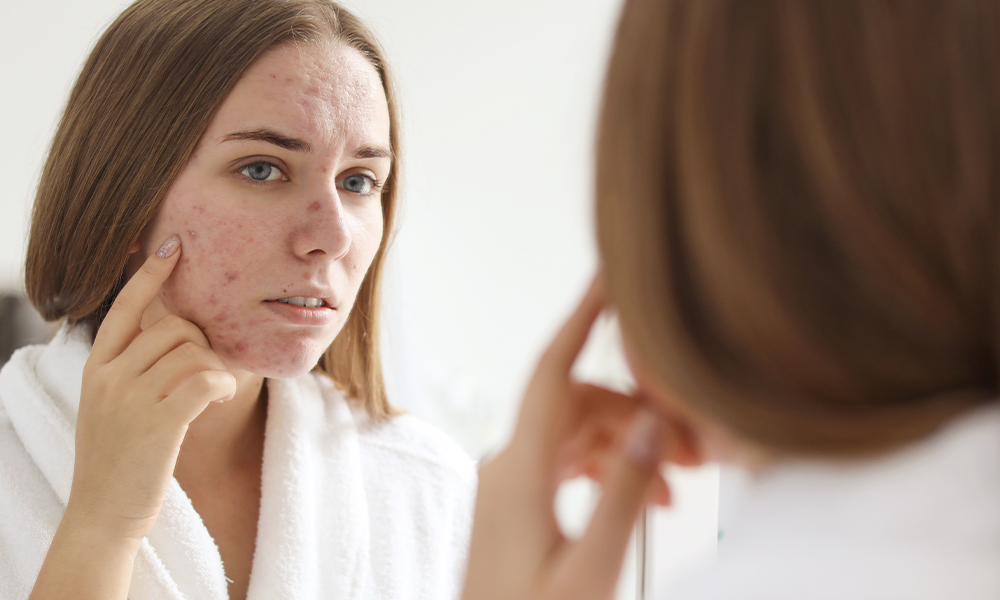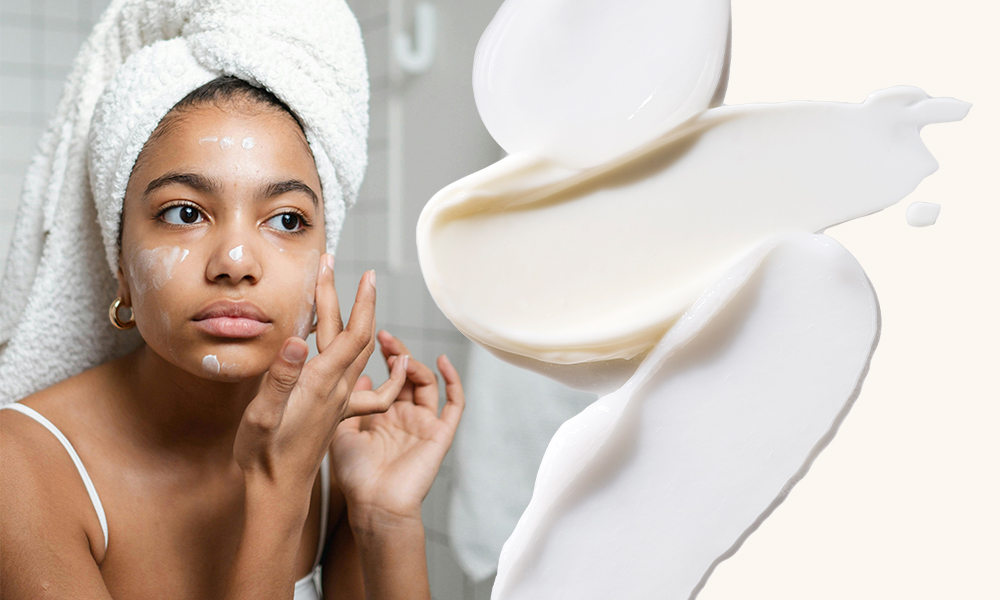The Brain-Skin Connection: Is Stress Affecting Your Complexion?

Ingredient Deep Dive: Hydroquinone
Do you have hydroquinone on your skincare radar? Used by dermatologists to treat hyperpigmentation, there are many myths surrounding this ingredient.
Today we’ll take a closer look at what hydroquinone actually is, how it treats hyperpigmentation, how you should use it, possible side effects and any other bits of juicy info you need to know.
What is hydroquinone?
Hydroquinone is a prescription-only ingredient which lightens the skin. Dermatologists may prescribe it in cases of hyperpigmentation, which is when darker patches appear on the skin as a result of inflammation, sun damage or melasma.
Hydroquinone was first created in 1820, but in-depth research on the ingredient took off in the 1940s. Since then, scientists experimented with different strengths of hydroquinone and investigated its potential uses in skincare
Historically, it’s been a controversial ingredient due to its potential for misuse as a way to make large areas of dark skin look paler. However, in the UK it cannot be bought over the counter and is only prescribed to treat chronic skin conditions which may impact an individual’s confidence and self esteem.
How does hydroquinone treat hyperpigmentation?
Our skin’s natural colour is determined by a pigment called melanin which is produced by cells in the top layer of our skin, called the epidermis. Hyperpigmentation most commonly occurs when melanin is overproduced, which leads to dark spots or patches on the skin’s surface. Post-inflammatory hyperpigmentation (or PIH), solar lentigos and melasma are three of the most common types of hyperpigmentation.
PIH occurs when the skin’s melanin-producing cells overproduce the pigment in response to inflammation, for example following a bout of acne. Solar lentigos is the medical name for the dark, flat patches that appear following chronic sun exposure – sometimes they are called age spots, sun spots or liver spots.
Melasma is a common skin condition characterised by flat, usually symmetrical, darker areas of the skin. It is common during pregnancy and is thought to be linked to hormonal changes. Sun exposure also plays a role in melasma, as dermatology clinics tend to see more people with the condition in Autumn, after the warmer months.
The gold standard treatment for melasma is a ‘triple therapy’ consisting of hydroquinone, tretinoin and hydrocortisone. Hydroquinone works to lighten the darker patches while tretinoin, a retinoid 20 times stronger than retinol, increases cell turnover. Hydrocortisone, a mild steroid, soothes any inflammation or irritation caused by these powerful ingredients. This combination has been found to be a more effective treatment for hyperpigmentation than using these ingredients alone.
Here’s the science-y bit. Usually melanocytes (melanin-producing cells) convert tyrosine (an amino acid) into melanin with the help of an enzyme called tyrosinase. In cases of hyperpigmentation, the cells produce more melanin than usual. Hydroquinone works by inhibiting tyrosinase, temporarily reducing the production of melanin.
How do you use hydroquinone?
You should only use hydroquinone if it has been prescribed to you, and you should only use it exactly as directed by your clinician.
Top tip #1: If you’re using a treatment cream that contains hydroquinone, you should apply it after cleansing but before moisturising. Massage a small amount of the product into your skin until completely absorbed and make sure you wash your hands after use. You don’t want the powerful product ending up anywhere else and affecting other areas of the skin.
Top tip #2: Always wear sunscreen if you’re using hydroquinone. Not only can the sun’s rays make hyperpigmentation worse – especially solar lentigos – but it can also actually reverse the effects of the treatment. Why not add a tube of Daily Defence Oil-free Sunscreen SPF 50 to your next Skin + Me box? It’s been specifically designed by Dermatologists for use with active ingredients like hydroquinone.
Top tip #3: Make sure you avoid products containing peroxide, such as hydrogen peroxide and benzoyl peroxide, as this combination can stain the skin. Harsh ingredients such as AHAs should also be avoided when you’re using hydroquinone.
Does hydroquinone have any side effects?
Hydroquinone can cause dryness or irritation when you start using it. If you are prone to dry or sensitive skin already then caution is needed – your prescribing clinician will be able to advise you on how to use hydroquinone safely.
Dryness and irritation often ease once the skin has fully adjusted to the new ingredients. People with more balanced or oily skin types will be less likely to experience dryness or irritation.
Ochronosis is a rare condition that results in blue, black or grey marks on the skin and can be caused by excessive use of hydroquinone. The majority of cases of ochronosis are linked to the use of very high concentration. of hydroquinone several times a day for several years. No cases of ochronosis have been reported when hydroquinone is used at concentration between two and five percent, for short periods of time under medical supervision.
There have been reports of cancer associated with the use of hydroquinone, but it is important to point out that these were only seen in animal studies and when hydroquinone was used orally. There have been no reports of cancer in humans after topical use of hydroquinone.
Hyperpigmentation can be a difficult condition to treat and it can look different on everybody, as we are all unique and so is our skin. Although hydroquinone may help clear areas of hyperpigmentation, this ingredient isn’t appropriate for everyone so it’s always good to check in with your skin and listen to it if it doesn’t seem happy. Get in touch with your prescribing clinician if you have any questions or concerns about hydroquinone treatment.
The take-aways
Hydroquinone can be a safe and effective treatment for hyperpigmentation, but you should only ever use it under medical supervision. This means no long-term use and regular medical reviews to make sure that you are not at risk of side effects.
With the right support, controlled doses of hydroquinone can help to reduce hyperpigmentation for a smooth, even skin tone.
New to Skin + Me? Get your first month of personalised skincare for £4.99 with promo code DOSE – complete our quick consultation here.
Looking for a routine refresh? Add the Dream Routine to your Skin + Me subscription.
In need of a restock? Head to The Skincare Shop for one-off purchases of your Routine Essentials.



